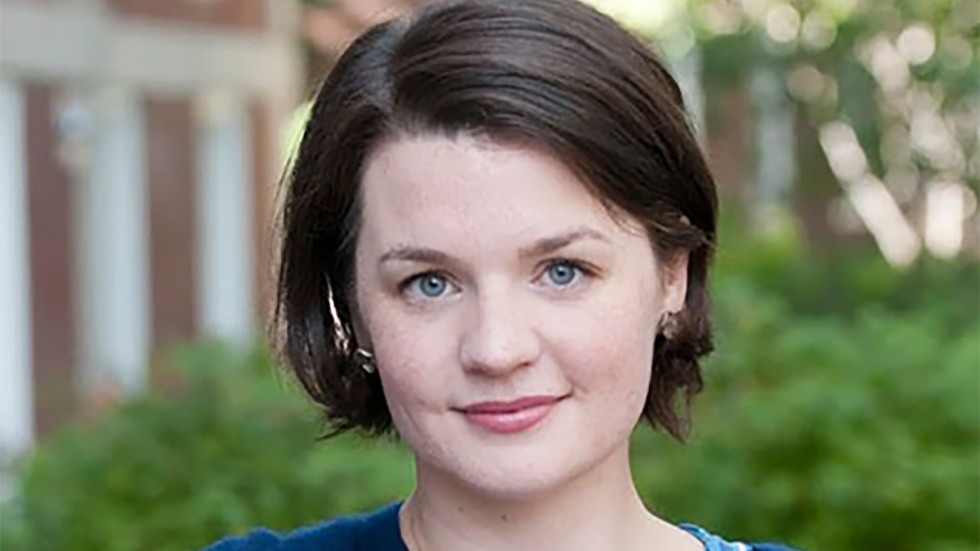Tell us how you came to Brown, first as an undergraduate and later as a professor.
Bryce Steinberg: When I first came to Brown, I was fairly certain I was going to become a lawyer. I come from a working-class family and thought that the goal of going to [an Ivy League university] was to get a steady, high-paying position like a lawyer. I did research for David Weil [A.B.,’82, the James and Meryl Tisch Professor of Economics] and totally fell in love with economics research. I was his research assistant until I graduated. Then, I worked as a full-time research assistant for Emily Oster [the Watson Institute’s Royce Family Professor of Teaching Excellence and Professor of Economics], when she was at the University of Chicago before I earned my Ph.D. at Harvard University.
I mistakenly assumed that getting a doctorate meant you’d be poverty-stricken and live in a basement. David persuaded me to pursue a doctorate, and then I think that David and Emily conspired to hire me here.
Watson’s interdisciplinary approach is a huge draw. I can evaluate data from India and tell a story about what I’m seeing there; as a quantitative researcher, I find it immensely valuable to learn from qualitative experts on India – such as anthropologists and sociologists – who openly share their expertise with me. It’s so beneficial to have those complementary relationships between field-driven anthropologists and highly analytical applied economists. Sometimes, people in different disciplines can be very territorial and not want to engage with one another; that’s not at all true here.
What’s the appeal of economics for you?
BS: The logic of economics appeals to me as does the blend of the hard science’s rigor with soft science’s human impact. Economics has become synonymous with quantitative social science, so economists study anything and everything. My work focuses on schooling and child labor; others study marriage markets, health economics and discrimination. When the data revolution came, we had the tools of applied statistics and economic modeling to be able to effectively analyze huge amounts of data. It’s a really fun field to be In.
Tell us about your recent pilot project related to delaying pregnancy in Zambia.
BS: It was quite interesting to go to Zambia, where early fertility is extremely common, and many women are ambivalent about pregnancy. Our focus was on evaluating whether unwanted and unplanned pregnancies kept women from graduating from university. In contrast with many studies that generally focus on evaluating overall fertility rates, our pilot project focused on examining whether delaying first births would enable women to complete their college studies and enter the workforce.
I was surprised to see how many women in the focus group asked specific questions about reproduction and birth control medications – I’d expected those questions would have been answered through other sources, as there were plenty of resources on campus, but they didn’t seem to be getting through.
Do you anticipate scaling up this pilot project in Zambia, and do the pilot project results have applicability in other developing nations?
We are seeking funding to pay for a full-scale project – with two cohorts of 1,000 women each –to evaluate whether the two modest interventions that we offered in the pilot would defer unwanted or unplanned pregnancies. We intend to follow these women for several years to evaluate if the interventions affect graduation rates, entrance into the labor force and the number of children they have.
We always need to be conscious of the context we are working in. We often design an intervention to address the nuances of a place we are studying, but if we only learn from that distinct population, there’s a limit to how much we will learn. In the past 20 years, Randomized Control Trials (RCTs) are being used more by developmental economists; RCTs are designed for a specific study, but provide opportunities for the study’s findings to be extrapolated to other environments. If the pilot project’s results also appear in the larger intervention, we might suggest some similar interventions that could be tailored to women in Malawi or Kenya, for example.
Tell us about the MPA Microeconomics course you team teach with Professor of Economics and International and Public Affairs and Chair of the Economics Department John Friedman.
BS: We use a lot of policy examples in teaching this introductory course; we do a policy lab every week where students use economic and statistical tools to answer a real-world question. Students have evaluated whether soda taxes or calorie labeling are more effective [in limiting soda consumption] and their final lab exercises relate to a project in Zambia addressing access to clean water there.
Both John and I are very policy-oriented – John’s research focuses on domestic issues and mine on international issues. We can use examples, but the most effective way to teach students about how these concepts actually affect people’s lives is through our own research. The MPA program and Watson generally offer many possibilities for both students and faculty to dive into their interests.
